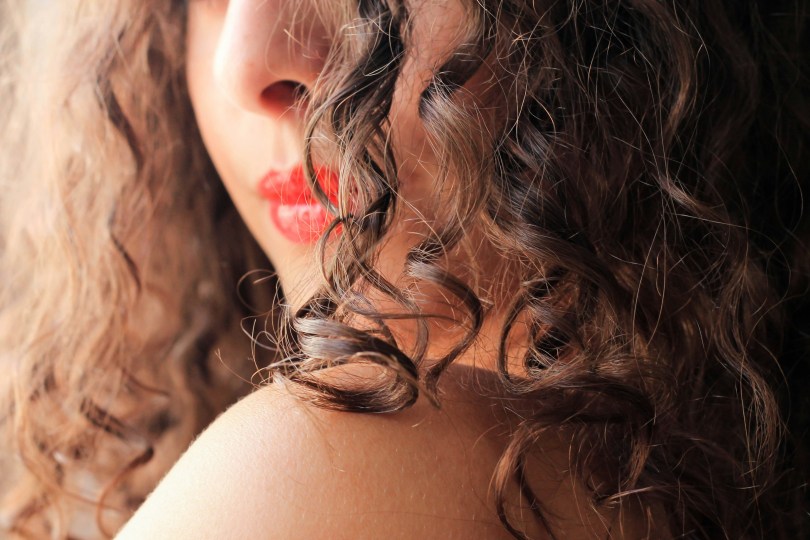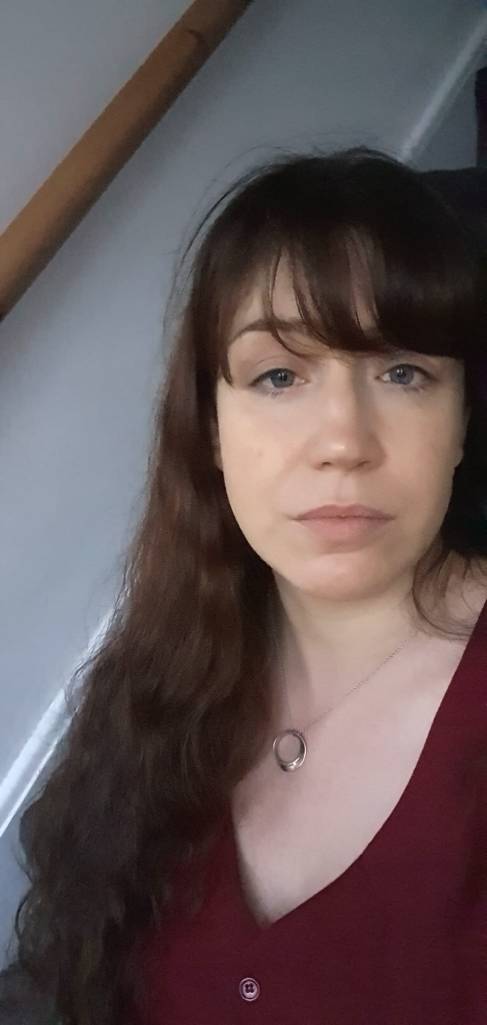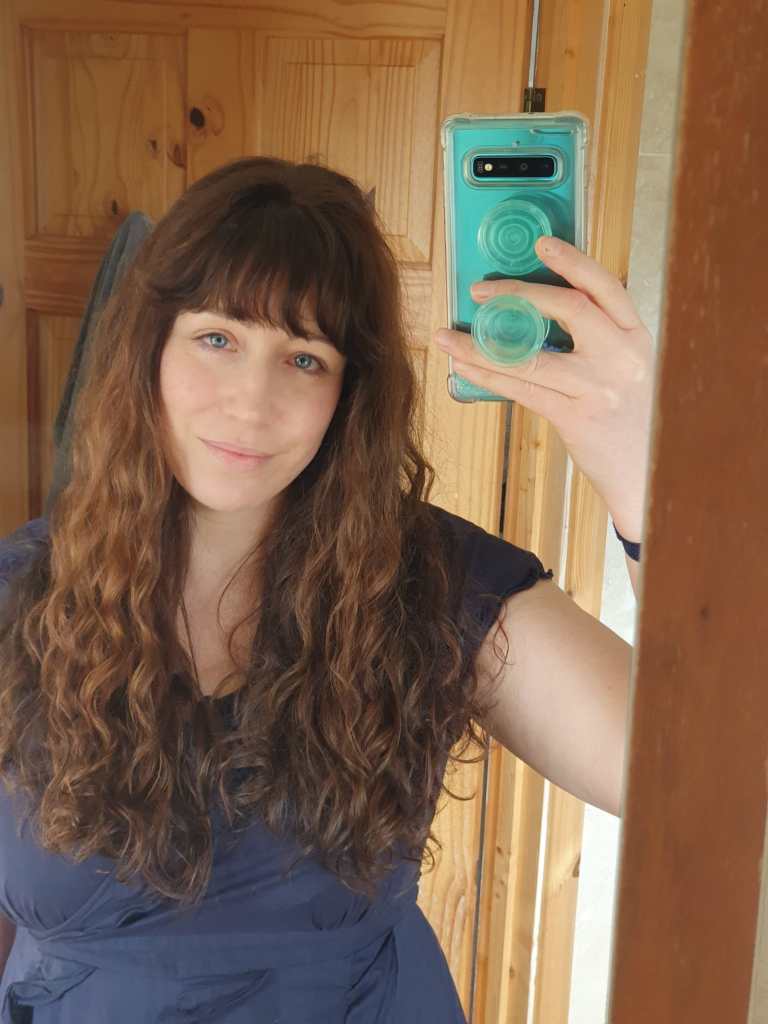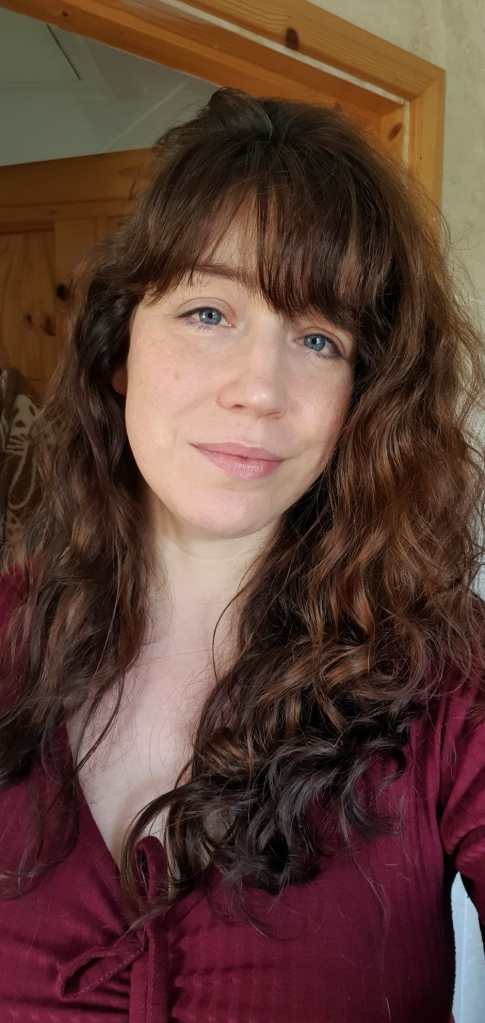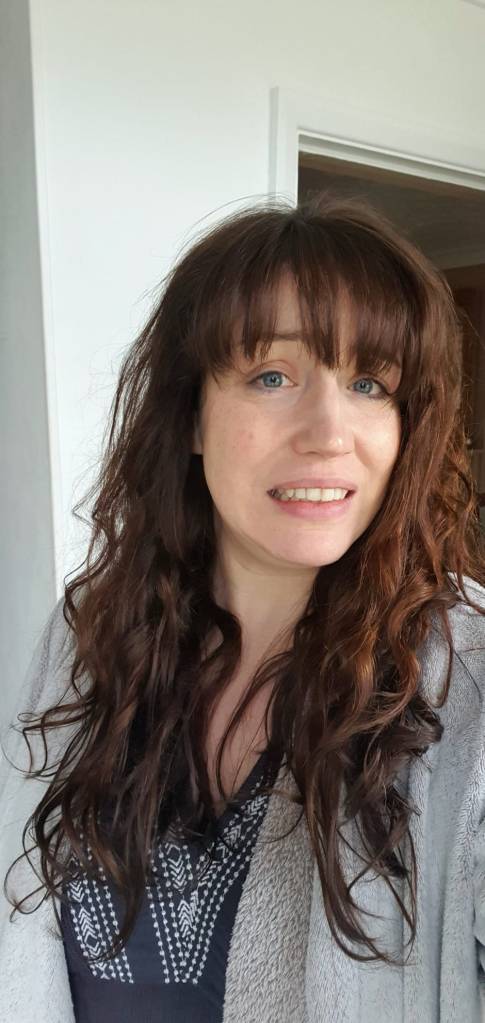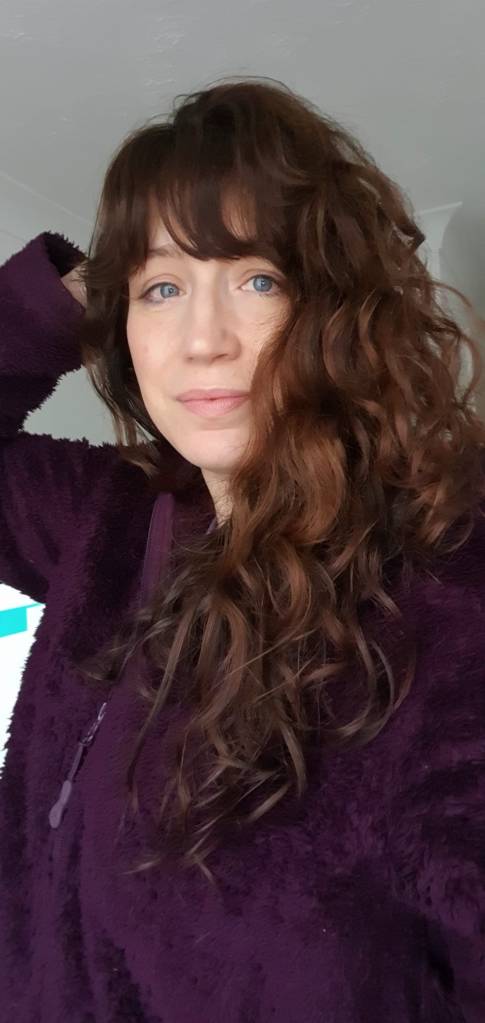You may or may not be familiar with the Curly Girl Method. In short: 50 percent of the population (apparently) have naturally curly or wavy hair, and with the right products and techniques, you can have glorious curly (or wavy) tresses, too.
The Curly Girl Method (CGM) has reached a kind of cult status online, and I understand why. Most of us don’t know that we might have naturally curly or wavy hair, and we are using the wrong products for this hair type. Unless I’m using shampoo and conditioner (and styling products) that are designed for curly hair, my hair will simply look slightly wavy (as pictured, below).
I discovered my curly hair by accident, by inadvertently using CGM-approved products and letting my hair air-dry one day at home (I usually plait it when wet, which disrupts the natural curl pattern, but that day I didn’t). I walked past a mirror en-route to the loo and did a double-take. I had ringlets at the bottom of my hair. I quickly snapped a photo and sent it to my friend, who had been on the curly hair journey for a while. Her reply was along the lines of: “You’re a curly girl, too!” Frantic googling ensued, and I purchased some products designed for curly hair (not realising my existing shampoo and conditioner were actually CGM-approved).
It is an understatement to say I didn’t have much success at first. In fact, I nearly gave up. To anyone considering this journey, you must know it isn’t an easy one. You need to be ready to try something new. Your lifestyle (and ego) needs to be able to handle a bad hair day. Having had so few in my lifetime (I now realise), this came as a shock to me. Some days I’d apply too much product, or simply one not suited to my hair type, and I’d end up with dull, stringy hair. Other days I’d use insufficient styling product and have great curls for about an hour before they dropped out.
My first semi-successful attempt was with the OnlyCurls starter kit. At the time, I thought this was the best I could do. And to be fair, it was a big change from my usually quite straight hair.
Shortly after this point in my curl journey, I went on holiday with a group of women, some of whom were curious to try these new curly products. I secretly wondered if, actually, everyone’s hair was capable of being at least wavy, but I was proven wrong; some women experienced a similar transformation to the one I’d had, but for others, their hair remained poker-straight. The right products can only enhance naturally curly or wavy hair if you actually have it to begin with.
My obsession grew. I purchased more products, and found ones I liked more. I found I could get a decent curl sometimes, but that those curls would fall out quickly. Apparently this isn’t uncommon for type 2 hair (I have 2c/3a curls). I went to see a curl specialist in the area, and had a curly cut. I didn’t realise back then, but this was actually a big commitment to the curly cause.
I tried to replicate this the next day, using a co-wash, and my hair was a total flop in comparison. All this to say, it’s trial-and-error, which can result in frustration. But if you’re on the market for something fun to obsess over and you can afford to splash out on a few products, it’s some decent light entertainment, although the learning curve is a steep one.
As you might have gathered, I have in no way figured this stuff out. Some days my hair looks great, but more often than not I’d consider my efforts a ‘miss’ and I make notes and try again the next day (it helps that I wash my hair most days, which means most days are an opportunity for experimentation). I have watched countless curly girl videos on YouTube at this point, and yet despite this influx of knowledge, the painful reality is that each head of hair is different and considerable experimentation is required to figure out what it is our hair needs to look its best.
What does a bad hair day look like?
My curls are stringy here, and felt dry. In this instance this result was because I used a styling product that wasn’t compatible with my hair (I believe this was a mousse). For contrast, this is a better hair day (I used the Eco Warrior shampoo bar and the Garnier banana leave-in, but no styling products, so these curls didn’t last long):
Whilst I am no expert, here are some vital (in my opinion) tips I uncovered while figuring out my hair:
Your success relies heavily on being able to form curl clumps during the washing process. To do this, I use a shampoo (or co-wash) as normal, then apply a conditioner and ‘squish to condish’, an upwards scrunching motion that results in fat curl clumps forming (I prefer to do this with a leave-in conditioner such as the Garnier 3-in-1 Hair Food; I don’t use a curl crème as I’ve found this to be too heavy for my fine, low-porosity hair). I (might, in addition) apply a gel in the same fashion, then when I’m out of the bath I use a microfibre towel and a similar scrunching upwards motion to remove water from my hair. The microfibre towel does a good job of ‘styling’ the hair by simply removing excess water, causing the hair/curls to spring up.
I highly recommend brushing your hair conditioner through your hair. Whether you have curly hair or straight, you will want to do this. Not only does it give a really even application, you will use so much less conditioner this way. It’s also necessary for detangling your hair. I do sometimes brush my hair when it’s dry using a Tangle Teezer, but in general this is frowned upon in the Curly Girl community. To prevent damage, it’s best to detangle your hair whilst wet during the conditioning phase.
You won’t get anywhere without the right shampoo and conditioner. You can check whether your current shampoo and conditioner is CGM-approved by using isitcg.com. Anything with silicones, sulphates, waxes or minerals oils is a no-no.
If in doubt, apply styling products to soaking wet hair. How you apply your products matters. I was applying products to damp hair at first, and getting crappy results. I keep all of my haircare products, including stylers (gel, mousse, etc) in my bathroom.
Learn the various techniques for application (‘squish to condish’, raking, prayer hands, glazing etc) by watching tutorials online, and apply products accordingly.
Does your hair need moisture or protein? The only way you can really know is to use products that are either moisturising (co-wash, leave-in moisturising masks) or that contain protein (stylers with protein, keratin treatments/masks, shampoos and conditioners with protein, etc) and see what works best. When your hair is balanced, your curls will look their bouncy best. If your curls are starting to go limp, you need to re-balance. I use a lot of moisturising products because my hair is dry, so for me limp curls usually means I’ve over-moisturised and I need to clarify, cut back on the co-wash and maybe even add a protein product (e.g. a pre-wash treatment) to get things back on track.
You must either allow your hair to air dry whilst down (don’t tie it up!), or diffuse it until dry. I do a combination of both most days so I’m not walking around with dripping wet hair.
You absolutely need to understand your hair, and what your hair needs at any given point. This is the most frustrating part of the process; this isn’t a one-size-fits-all situation. Curl type doesn’t matter (2c, 3b, etc) but hair porosity does, and the best way you can identify this is by taking a strand of your hair and stretching it. Mell, of Manes by Mell, explains it best:

You need to know whether your hair needs more moisture or more protein. The aim of the game is to balance your hair in order to get shiny, bouncy, happy curls. Some wash days you might need more moisture, other days you’ll benefit from adding in some protein.
If your hair is similar to mine (low-ish porosity, fine/medium thickness, medium density, 2c/3a curls), you might benefit from my product recommendations. Here are my current favourites:
Pre-wash treatment: Forest & Shore thrive oil; I let this sit on my hair for 20+ minutes before washing and I seem to consistently get better results when I do this.
Shampoo(s): Eco Warrior Shampoo Bar for Dry, Curly & Afro hair, the OnlyCurls All Curl Cleanser.
Conditioner: Garnier Ultimate Blends Banana Hair Food (I use this after shampoo, and I leave it in my hair), the OnlyCurls All Curl Conditioner (I wash this one out, although I might try it as a leave-in one day).
Co-wash: As I Am Co-Wash; I use co-wash instead of shampoo when my hair feels particularly dry and I know it’ll appreciate the moisture.
Leave-in conditioner: SheaMoisture Miracle Styler Leave-In Treatment; this smells absolutely INCREDIBLE and is good for breaking up a gel cast.
Clarifying shampoo, used on a semi-regular basis to prevent build-up: I’ve been using the Aveeno Clarify and Shine Apple Cider Vinegar Shampoo and the L’Oreal Purifying Shampoo; I’m not sure how I feel about these yet. From tutorials I’ve watched online, the Noughty Detox Dynamo seems to be very popular (and OnlyCurls recommended this one to me, too).
Styling: At time of writing, I’ve had best results with the Noughty Hey Curl gel, but I have a lot of experimentation ahead of me when it comes to styling products. I want definition more than volume, and I found mousse left my hair feeling a bit crispy. You want your gel to form a ‘cast’ on your hair, which you then scrunch out using a tiny bit of oil (or leave-in conditioner).
Tools (that I consider essential): a microfibre towel (I bought the OnlyCurls one which I love, but there are bound to be cheaper ones on Amazon), a brush designed for curly hair (e.g. a Denman or a Tangle Teezer – I use the OnlyCurls Denman brush) for brushing conditioner and styling products through hair.
Knowledge is power. YouTubers I rate: HanzCurls, Manes by Mell, OnlyCurls.
Although styling curly hair takes a little while, it is easier (in my opinion) than curling tongs, and causes (much) less damage to your hair. That said, during your experimentation phase you will have days where your hair looks crappy or mediocre, and you will long for the guaranteed results of a curling tong. You don’t have to style your hair every time (I certainly don’t do it every day). If you find yourself getting frustrated and wanting to give up, my advice would be to carry on with the CGM-approved shampoo and conditioner, but put zero effort into styling (or use styling methods from your pre-curly days).
I’m still very much in the experimentation phase, and my bathroom is heaving with different products I am trialling. It is (mostly) fun, though, and there’s something fascinating about the fact that my hair is curly and has always been curly, but I had no way of knowing thanks to the products I was using. If you’re curious, you can invest in some inexpensive products to play with (I’d recommend the Eco Warrior shampoo bar and Garnier hair food conditioner/leave-in to start with) to see if you, too, have naturally curly hair. If you decide to venture up the curly path, don’t forget the ‘before’ photo! Is there anything more compelling than a good before-and-after? I say not.

